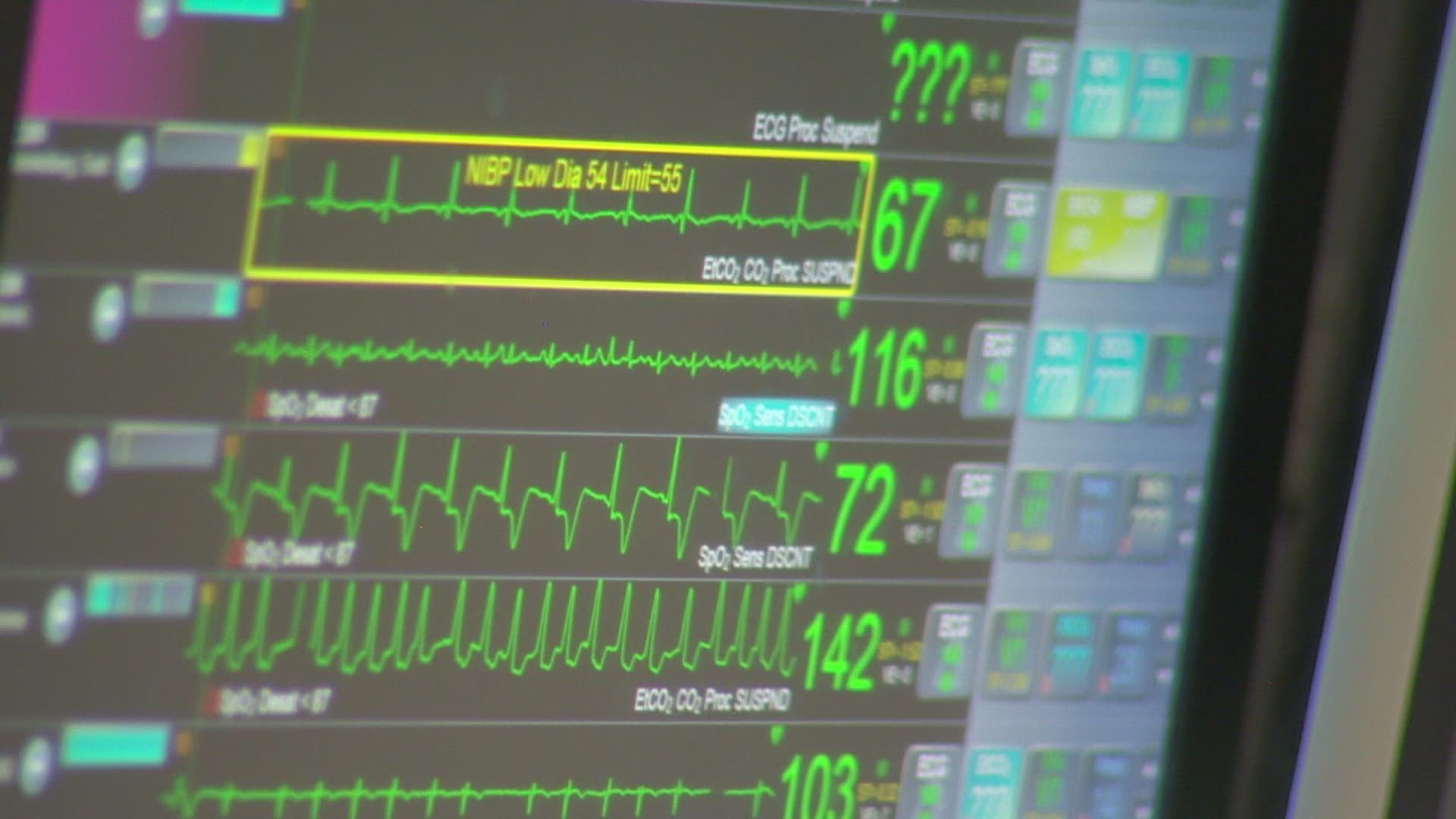SEATTLE — The omicron variant has burst into western Washington in the last few weeks, setting the region up to end the year with new daily case rate records.
The latest data from the Washington State Department of Health (DOH) shows that the state hit a record number of new daily COVID-19 cases on Christmas Eve with 6,235. The previous record was 5,526 new cases on Dec. 7, 2020.
As for the Puget Sound region, data shows that King, Pierce and Snohomish counties saw 4,685 positive COVID-19 cases on Dec. 24. The previous record for the three counties was also on Dec. 7, 2020, with 2,662, which was only the second time the daily case count ever hit more than 2,000.
The seven-day rolling average for daily cases hit 2,869 on Christmas Eve, another record, before tapering off over the holiday weekend.
"The omicron outbreak is no longer theoretical," King County health officer Dr. Jeffery Duchin said during a recent briefing. "It's real, it's here and it's moving fast."
While the sudden rise in cases caused by the highly infectious omicron variant is startling, health experts say the effects of the surge will likely not be felt by the hospitals as much as they were with the delta wave. The prediction was based on early studies that showed infection with the new variant doesn’t typically cause severe illness, especially for those who have received a third shot of the COVID-19 vaccine.
Incomplete DOH data shows hospitalizations in King, Pierce and Snohomish counties on the rise with a seven-day rolling average of 42 daily COVID-19 hospitalizations as of Dec. 25. King County’s COVID-19 hospitalizations as of Monday saw a 58% increase over the previous seven days.
Public Health – Seattle & King County (PHSKC), in response to the rising case numbers and uncertainty around how it will impact the health care system, released some information on how residents can stay out of the hospital and how they can treat mild COVID-19 illness at home.
First, everyone who is eligible should get the vaccine and a third dose. Whether just getting started with a first dose or scheduling a booster shot, PHSKC called it “the single most important thing you can do to prevent hospitalization from COVID.”
More breakthrough cases in those already vaccinated or previously infected with COVID-19 are expected with omicron, but vaccination does prevent severe illness, which will help keep hospitals from being overwhelmed.
During a briefing ahead of Christmas, DOH Secretary of Health Dr. Umair Shah continued to urge booster shots, saying, “So, it may be a confusing message to people, but it’s pretty clear. Get boosted. Get boosted. Don’t wait; get boosted.”
Since omicron is expected to cause milder illness in most patients, many Washingtonians will be treating themselves and their loved ones for COVID-19 at home.
Here’s how PHSKC recommends handling illness at home:
- Designate one person in the household, preferably someone vaccinated with a third dose, to be the caretaker for the sick individual. They should wear a high-quality mask when caring for the ill person and should be tested regularly.
- The patient should get plenty of rest and use over-the-counter medicines to treat any mild symptoms such as fever, sore throat and aches.
- The patient should get plenty of liquids, even if they don’t feel thirsty.
- If the patient is not eating solid foods, fluids containing sugars and salts can be a substitute. Some examples of these include Pedialyte, Lytren, broth or a sports drink mixed with water.
Each household should seek medical advice from their health care provider or a nurse consulting line, especially if the patient is at risk of severe illness.
If their symptoms become worse, call a health care provider.
Call 911 if the patient experiences trouble breathing, persistent pain or chest pressure, inability to respond, feelings of confusion or their lips or face have a blue or purple tint.

